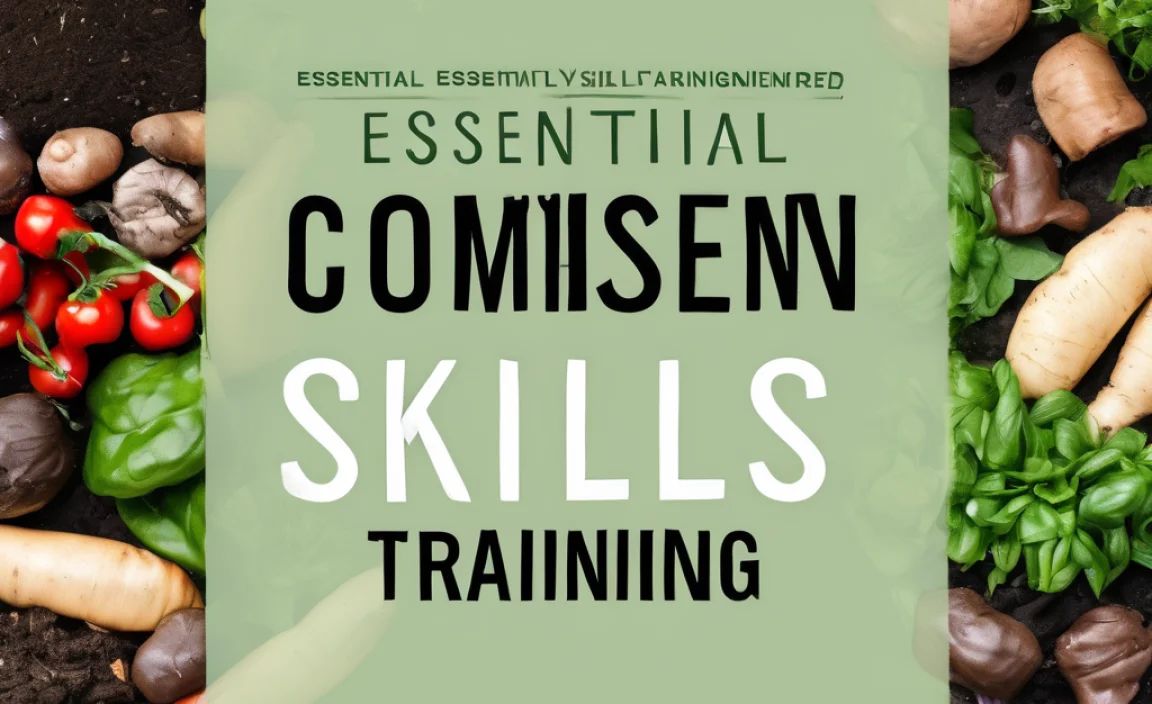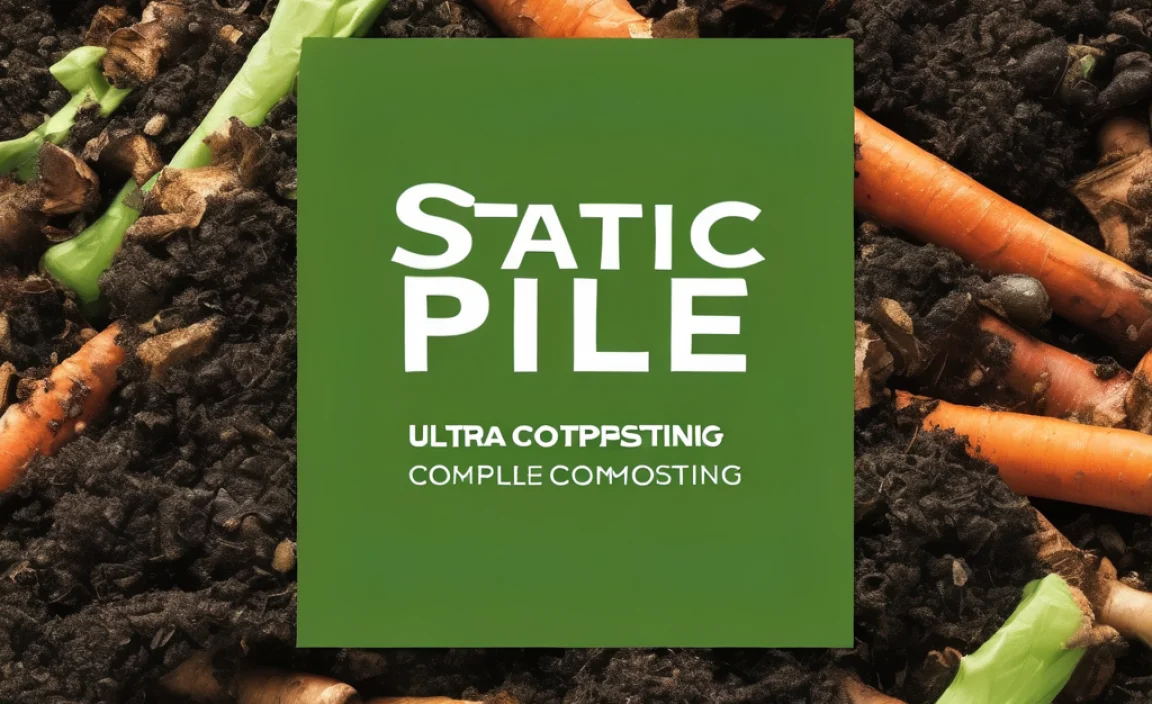Composting for Rural Areas & Bugs: Your Essential, Bug-Friendly Guide
Living in the countryside is fantastic, isn’t it? You’ve got space, fresh air, and a closer connection to nature. Part of that nature includes critters, and when you’re thinking about composting, sometimes those little critters can seem a bit… much. Especially when you’re just starting out!
It’s totally normal to worry about attracting unwanted bugs to your compost bin. But here’s the good news: with a little know-how, you can compost successfully in a rural setting without turning your yard into a bug buffet. We’ll cover what to do, what to avoid, and how to keep your compost happy and bug-free.
Why Composting in Rural Areas is a Little Different (and How to Master It!)
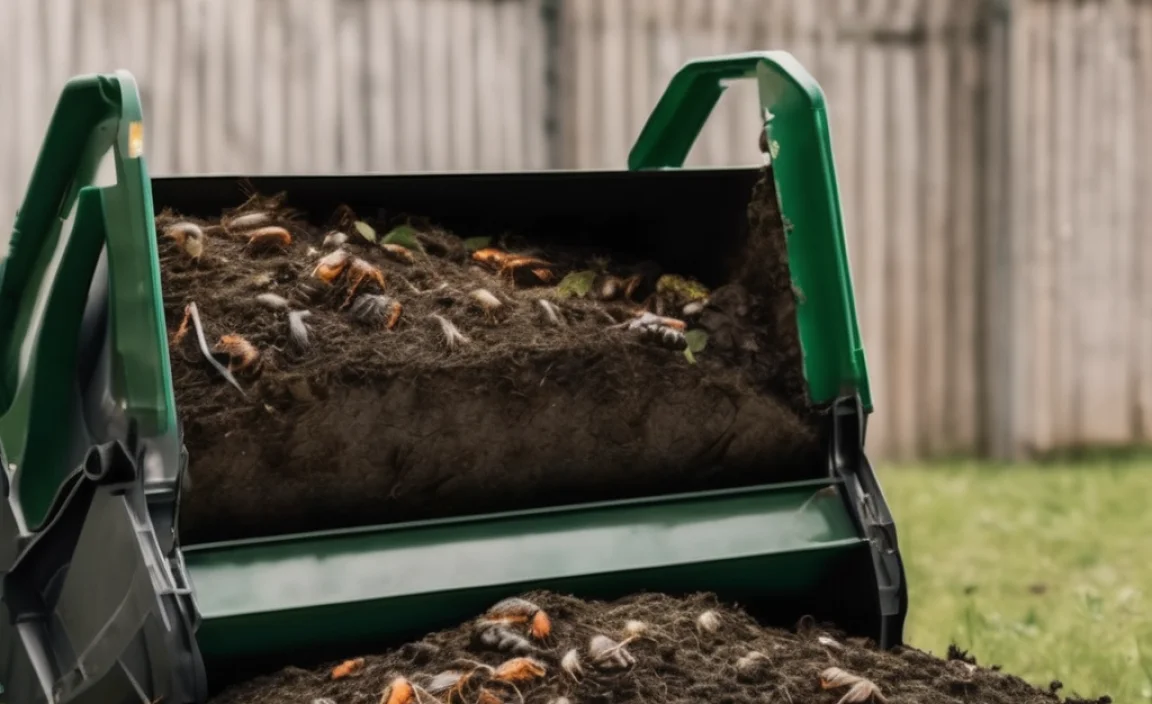
Rural composting can be super rewarding. You’re turning kitchen scraps and yard waste into nutrient-rich soil that your garden will absolutely love. Plus, you’re reducing waste going to landfills. It’s a win-win for you and the planet!
However, rural settings often mean more open space, different types of wildlife, and potentially more opportunities for bugs to find your compost. The key is understanding what attracts them and how to manage your compost pile so it’s a healthy ecosystem, not an all-you-can-eat buffet for pests. We’re going to break it down, step-by-step, so you feel totally confident.
Understanding the “Bugs” in Your Compost
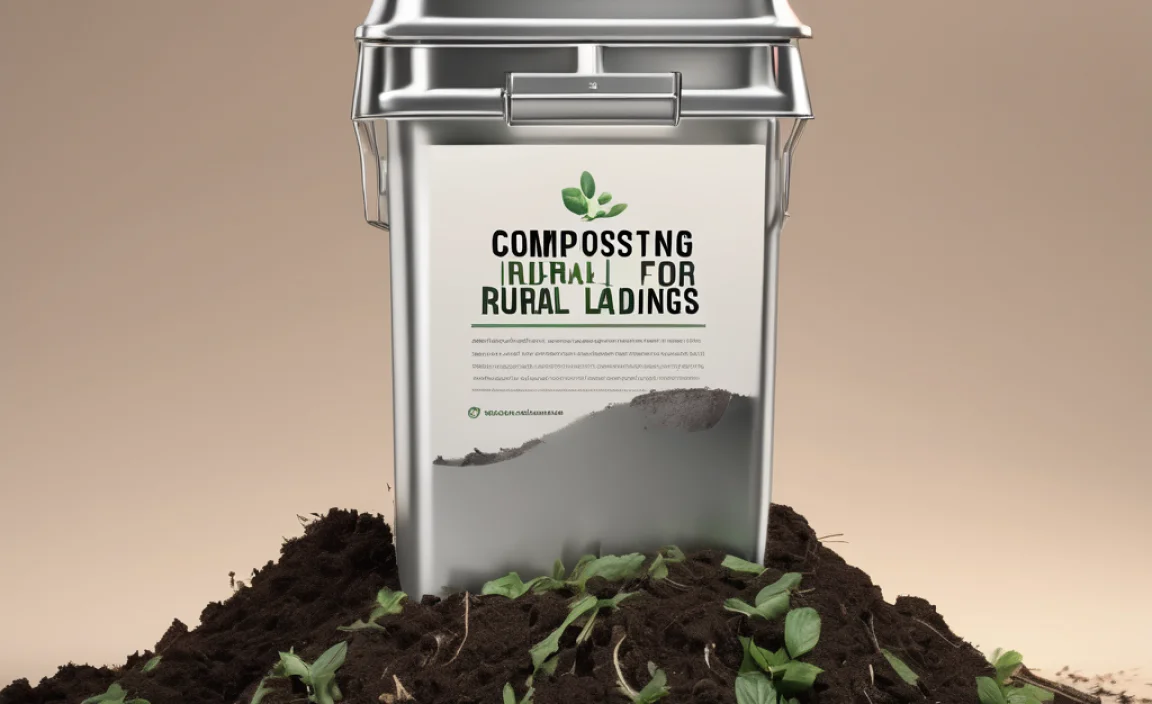
First off, let’s talk about “bugs.” Not all insects are bad news for your compost pile. In fact, many are your composting superheroes! They help break down organic matter faster. Think of them as tiny, hardworking decomposers.
Beneficial Bugs: Your Composting Allies
- Earthworms: The superstars of composting! They tunnel through the material, aerating it and leaving behind nutrient-rich castings.
- Red Wiggler Worms: A specific type of earthworm that thrives in compost bins. They eat a lot and reproduce quickly.
- Mites: Tiny, often white or reddish creatures that help break down tougher materials.
- Springtails: Small, white, jumping insects that are excellent decomposers, especially of fungi and mold.
- Rove Beetles & Ground Beetles: These are predators that eat other, less desirable invertebrates, like fly larvae.
The “Less Welcome” Visitors
Then there are the bugs you might want to discourage. These often show up when the compost balance is off, attracting flies or rodents.
- House Flies & Fruit Flies: Attracted to exposed food scraps, especially sweet fruits and vegetables.
- Ants: Can be drawn to moist, unbalanced compost, especially if it’s too dry or has too much of one thing.
- Mosquitoes: They breed in standing water, so a waterlogged compost pile can be a problem.
- Cockroaches: While not typically a compost-eating bug, they might be attracted to the warmth and moisture, especially if there are food scraps exposed.
- Rodents (Mice, Rats): Attracted to easy food sources like exposed meat, dairy, or large amounts of grains.
Choosing the Right Composting System for Your Rural Space
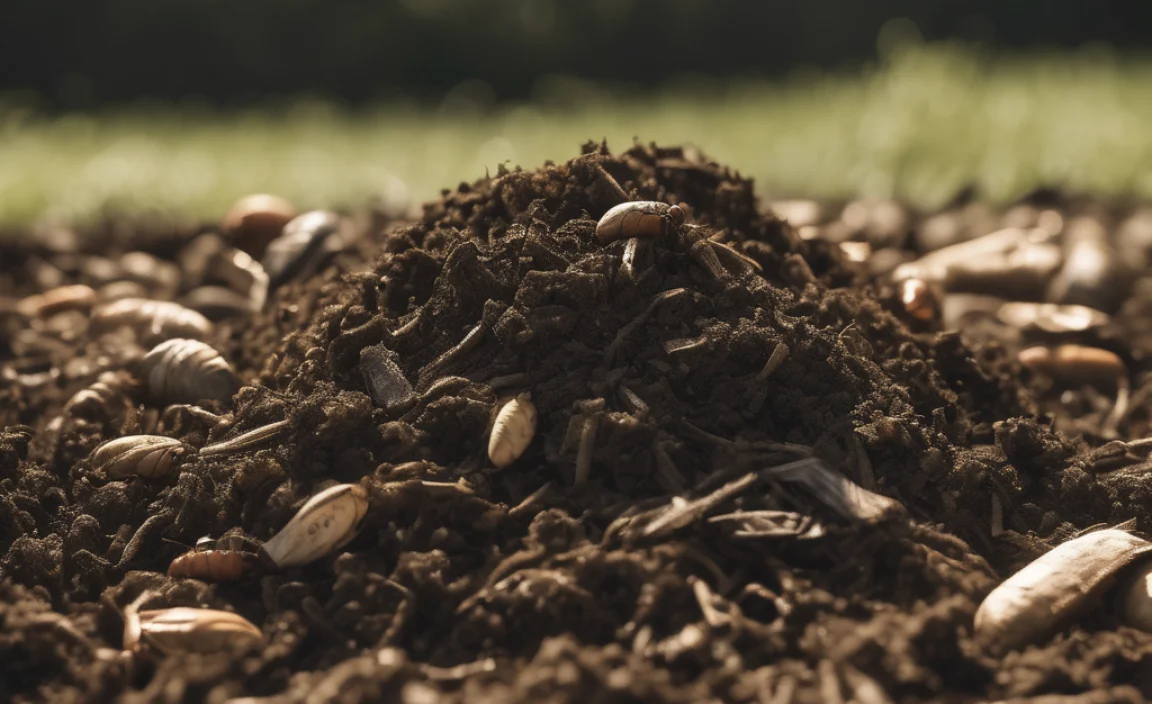
Your composting system is your first line of defense against unwanted visitors. Different types of bins work better for different rural setups and bug concerns.
Option 1: The Enclosed Tumbler Bin
These are like big barrels that you spin. They’re great because they’re fully enclosed, which is excellent for keeping bugs and rodents out. They also help speed up composting because you can easily mix and aerate them.
Pros:
- Excellent pest control.
- Faster composting due to easy aeration.
- Neat and tidy appearance.
Cons:
- Can be more expensive upfront.
- Limited capacity compared to open piles.
- Requires a bit of physical effort to turn.
Option 2: The Stationary Bin (Plastic or Wood)
These are solid-sided bins, often with a lid. They’re more contained than an open pile but less fully sealed than a tumbler. They offer good protection
if managed well.
Pros:
- Good rodent deterrence when the lid is closed.
- Keeps materials tidy.
- Relatively easy to build or purchase.
Cons:
- May not deter smaller insects as effectively as a tumbler.
- Aeration can be trickier, requiring manual turning or aeration tools.
Option 3: The Open Pile (Three-Bin System)
This is the classic, large-scale compost pile. It’s versatile and can handle a lot of material, but it offers the least protection against pests and bugs if not managed carefully. Rural areas with plenty of space often use this method.
Pros:
- Can handle very large volumes of material.
- Inexpensive to start (can build with pallets).
- Easy to add materials.
Cons:
- Most susceptible to attracting pests and bugs if not maintained.
- Can be messy if not contained.
- Requires more effort to turn and manage for proper decomposition.
The Art of Balance: Greens, Browns, and Moisture
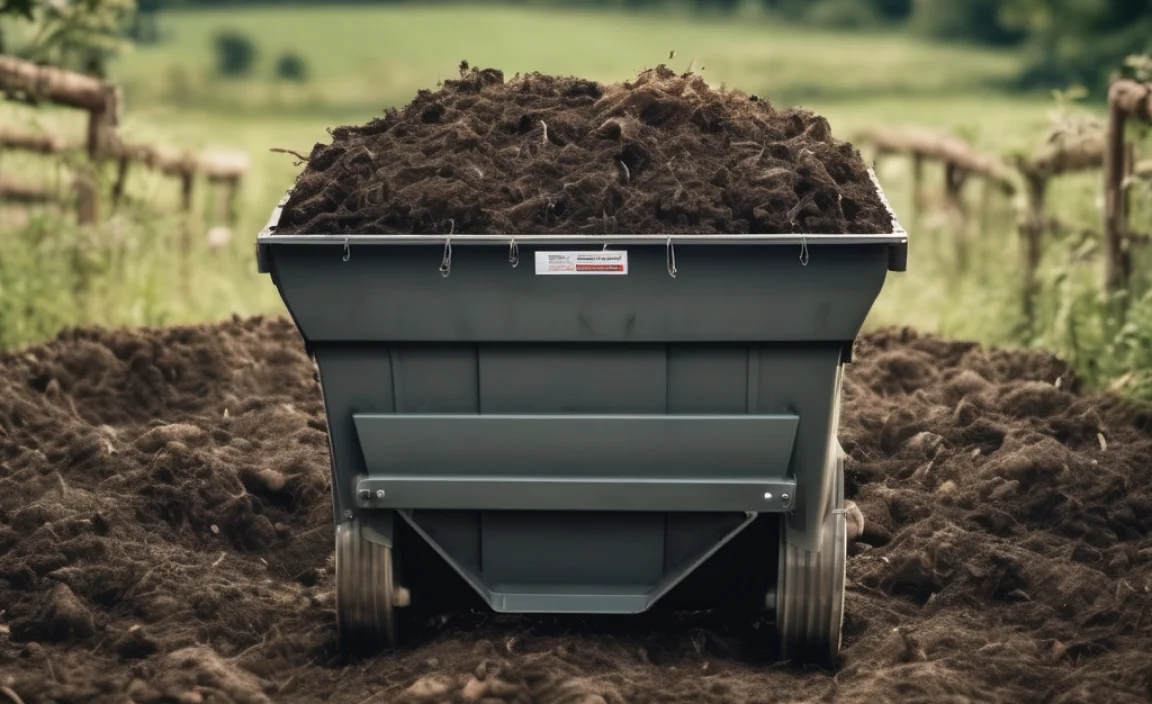
The absolute key to a healthy, bug-balanced compost pile is getting the mix right. Composting is all about balancing “greens” and “browns,” along with the right amount of moisture. This balance is what welcomes the good bugs and discourages the bad ones.
Understanding Your Ingredients: Greens and Browns
Think of greens as nitrogen-rich materials and browns as carbon-rich materials. You need a good ratio of both.
| Greens (Nitrogen-Rich) | Browns (Carbon-Rich) |
|---|---|
| Fruit and vegetable scraps | Dry leaves |
| Coffee grounds and tea bags | Straw or hay |
| Grass clippings (in thin layers) | Shredded newspaper or cardboard (uncoated) |
| Plant trimmings (non-woody) | Sawdust (from untreated wood) |
| Manure (from herbivores like chickens, rabbits, cows, horses) | Twigs and small branches (chopped) |
The Ideal Ratio: Aim for roughly 2 to 3 parts Browns to 1 part Greens by volume. Too many greens can make the pile slimy and smelly, attracting flies. Too many browns can make it dry and slow to decompose.
Moisture Control: Not Too Wet, Not Too Dry
Your compost pile should feel like a wrung-out sponge. If it’s too wet, it becomes a breeding ground for flies and bacteria that smell. If it’s too dry, decomposition slows way down, and it can become dusty and attract ants.
- Too Wet? Add more browns! Dry leaves, straw, or shredded cardboard will absorb excess moisture.
- Too Dry? Add water! You can gently water the pile with a hose or watering can. Turning the pile as you water helps distribute it evenly.
Step-by-Step: Building and Managing Your Bug-Friendly Compost
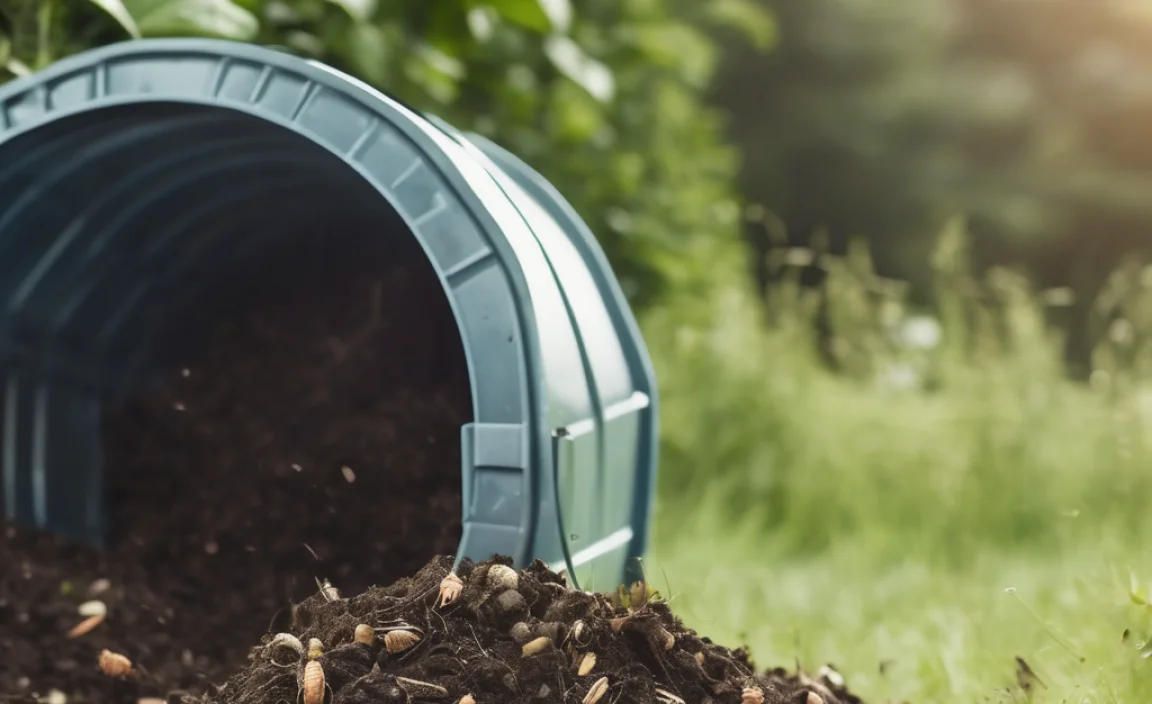
Let’s get practical. Here’s how to set up and maintain your compost pile to keep those unwanted bugs away.
Step 1: Choose Your Location
Pick a spot for your compost bin or pile that’s:
- Accessible: You’ll need to add materials and turn it regularly.
- Well-drained: You don’t want it sitting in a puddle.
- Partially shaded: Full sun can dry it out too quickly, while full shade might keep it too damp.
- Away from your house: While a well-managed pile shouldn’t smell, it’s good practice to keep it a reasonable distance from your home.
Step 2: Build Your Base
Start with a layer of coarse brown material at the bottom. This could be twigs, small branches, or straw. This helps with aeration and drainage from the start.
Size of Base Layer: About 4-6 inches deep.
Step 3: Add Your Materials – The Right Way
As you collect kitchen scraps (greens) and yard waste (browns), add them in layers. Try to maintain that 2-3 parts browns to 1 part greens ratio.
Tip: Chop larger items into smaller pieces. This increases the surface area, allowing microbes and bugs to break them down faster.
Step 4: Bury Your Food Scraps
This is a crucial step for deterring flies and other pests. Always bury fresh kitchen scraps (your green materials) in the center of the pile or bin, and then cover them completely with a layer of brown material. This “sandwiching” technique hides the attractants.
Step 5: Maintain Moisture
Check the moisture level regularly. Give it a squeeze. If it’s dry, add water as you turn. If it’s soggy, add more browns.
Step 6: Aerate – Turn Your Compost!
This is essential for good composting and pest control. Turning your pile introduces oxygen, which the beneficial microbes need, and helps regulate temperature and moisture. It also helps “bury” any food scraps that might be near the surface.
- Frequency: Aim to turn your compost at least once every 1-2 weeks. The more you turn, the faster it breaks down.
- Tools: A pitchfork or a compost aerator tool can be very helpful. For tumblers, just give them a good spin!
Step 7: What NOT to Compost (Especially in Rural Areas!)
Some items can cause more problems than they solve, especially when it comes to attracting pests.
- Meat, bones, and dairy products: These are highly attractive to rodents and can create strong odors. Avoid them unless you have a very securely enclosed and hot composting system.
- Oily or greasy foods: These can slow decomposition and attract pests.
- Diseased plants: If you’re not actively hot composting, diseases can spread to your garden.
- Weeds that have gone to seed: You don’t want to spread them in your compost.
- Pet waste (from cats and dogs): These can contain pathogens harmful to humans.
- Chemically treated wood or yard waste: Avoid anything that might contain pesticides or chemicals.
Step 8: Know When Your Compost is Ready
Finished compost is dark, crumbly, and smells earthy – like a forest floor after rain. You shouldn’t be able to recognize the original materials.
Timeframe: This can take anywhere from 2-3 months to a year, depending on how actively you manage your pile, your climate, and your composting method.
Troubleshooting Common “Bug” Problems
Even with the best intentions, you might encounter some unwelcome guests. Here’s how to deal with them:
Problem: Fruit Flies / Drain Flies
Cause: Exposed, overly moist food scraps. Often seen when the compost isn’t fully covered or is too wet.
Solution:
- Always bury fresh food scraps deep within the pile and cover them with browns.
- Add more brown materials to absorb excess moisture.
- Ensure good aeration.
Problem: Ants
Cause: The compost pile is too dry, or there’s an imbalance of materials. Ants are often looking for moisture or food.
Solution:
- Increase moisture: Water the pile thoroughly and turn it to distribute water evenly.
- Add more “greens” (food scraps) to provide moisture and create a more appealing (to microbes) environment.
- Ensure good airflow.
Problem: Rodents (Mice, Rats)
Cause: Easy access to attractive food sources like meat, dairy, grains, or large amounts of exposed food scraps.
Solution:
- Use an enclosed bin or tumbler: This is the most effective method. Ensure any gaps are sealed.
- Avoid prohibited items: Never compost meat, dairy, or oily foods.
- Bury food scraps deeply: Always cover food scraps with a thick layer of browns.
- Install a barrier: For open piles or stationary bins, consider lining the bottom and sides with hardware cloth (a sturdy metal mesh, about ¼-inch openings) to prevent burrowing. You can find this at most hardware stores. Hardware Cloth Guide
- Keep the pile actively managed: A hot pile deters rodents.
Problem: Mosquitoes
Cause: Stagnant water in the compost pile.
Solution:
- Ensure good drainage.
- Turn the pile regularly to aerate and prevent waterlogging.
- If your bin collects water, make sure to empty it.
The Role of Healthy Soil Microbes
Think of your compost pile as a miniature ecosystem. When you have the right balance of greens, browns, moisture, and air, you cultivate a thriving population of beneficial microbes and the good bugs that break down material.
These microbes (bacteria and fungi) are the primary decomposers. They pre-digest the tougher materials, making them accessible to larger organisms like worms, mites, and springtails. These, in turn, create an environment that is less appealing to flies and other scavengers.
If your pile smells bad, looks slimy, or is attracting pests, it’s often a sign that the microbial activity is out of whack – usually due to too much moisture or not enough air. Turning the pile and adding browns can re-establish the healthy microbial environment and keep those problem bugs at bay.
Composting in Different Rural Climates
Your local climate plays a role too. In cooler climates, composting might be slower, and you might need to protect your pile from extreme cold. In hot, dry climates, you’ll need to focus extra hard on maintaining moisture.
For colder regions, consider using an insulated bin or an enclosed tumbler, as they retain heat better. You might also need to add materials more consistently through the winter or simply let the process slow down until spring. For hot climates, regular watering and perhaps shading your compost bin can be very helpful to prevent it from drying out too quickly.
The U.S. Environmental Protection Agency (EPA) offers excellent resources on composting that can provide further insights into managing your compost under various conditions. Their guidance on reducing, reusing, and recycling, including composting, is invaluable. EPA Composting Basics
Frequently Asked Questions About Composting Bugs
Q1: Will composting attract snakes or other wildlife?
A: While well-managed compost piles can attract beneficial insects and worms, they generally won’t attract larger wildlife like snakes unless there’s an abundant, easy food source like rodents present. Keeping meat, dairy, and oily foods out of your compost, and using enclosed bins, are the best deterrents.
Q2: I see tiny white bugs on my compost. Are they bad?
A: Most likely, these are mites or small white springtails. These are excellent decomposers and are a sign of a healthy, active compost pile! They help break down tougher materials.
Q3: My compost is attracting a lot of house flies. What am I doing wrong?
A: House flies are usually attracted by exposed

I am passionate about home engineering. I specialize in designing, installing, and maintaining heating, ventilation, and air conditioning systems. My goal is to help people stay comfortable in their homes all year long.

